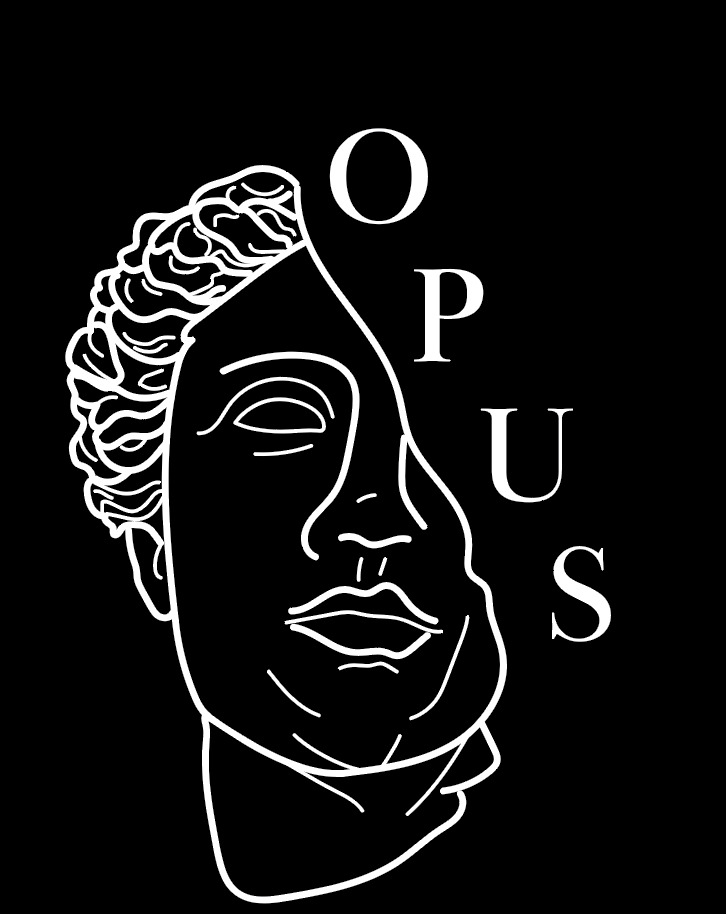How I look at submitted pieces
BY ZACHARY DANKERT
If you’re interested in submitting to Opus, or have previously submitted and plan to revise and resubmit, you might be wondering what exactly we look for, what specific aspects of the craft will get your piece into Hope’s literary and arts journal. I wish I could tell you exactly that, but it is a little complicated. We have six members on our editorial team, each with specific interests and strengths. Together we offer a wide range of experience and knowledge in poetry, short fiction, essay, photography, painting, sculpture, and various other mediums. Our meetings are open to any Hope students, and with every meeting our group of participants looks different. This means that with every Tuesday and Thursday meeting we have a different collective mind voting on submitted work. So I can’t tell you specifically what to do to get in. However, I can share my own list of things I look for in submissions, so you can have a better idea on what we look for. I’ll also share examples from our latest edition of Opus.
Poetry
In poetry I look for things that surprise me, images or phrases I wasn’t expecting, like “vein pop tomato chop” from Katelynn Paluch’s “dreary.” Poetry is one of the only forms in which writers can let their creativity soar limitless. It’s like the surreal paintings of the writing world, like “not an elephant – sickness is the swarm of bees in the room” from Adriana Barker’s “cancer” or “hold the holy sunlight in these hands, / But I’ll explain how it’s leaking out of my head,” from Grant McKenzie’s “Saturn, Above Her Ankle.”
Surrealness is often overdone in poetry, but when done in a purposeful and learned way it can elevate a poem beyond what one can expect. But what is equally important are the concrete, solid images that play like a movie in your head, like “roots intertwining through waterlogged books / fish floating in the entryway” from Katelynn Paluch’s “growth/decay.”
Imagery doesn’t have to be beautiful to be effective, like in Andrew Silagi’s “Chew”: “Flog me until I have bloody welts throbbing on my back for / you to eat with a spoon.” Imagery should be vivid and strong, used to not only please us but also to disgust us or stun us, to confuse or inspire wonder as well as anger. Imagery is the fuel of poetry; without it the words will eventually lose energy.
What can also make poetry are those unprepared for moments, those random phrases that are so well constructed they stay within your head. Think “the skeleton laid all aflower isn’t quite the only one we brought / today” from Katelynn Paluch’s “grief” or “carbon traces of what was and what will be” from Kathryn Chupp’s “for you are dust, and to dust you will return.”
And, of course, a poem must end with one of its strongest lines; it should not only keep you engaged throughout it’s reading but also leave you with a lasting punch. Let’s look at Kathryn Smith’s “Are you Asexual?” with the concluding line, “no, I’m not asexual. I’m just terrified” or Samuel Vega’s “The Banjo/Sitar Brotherhood,” which ends with “Let their songs climb to the Heavens / under the same enlightened tree.”
Visual Art
I have always been more of a writer than a visual artist, but I still love to see what types of art Hope’s visual artists submit. I’m always amazed by the skill and ability present here. With photography, I enjoy seeing new and interesting angles, like the view of the windows in Kathryn Kolthoff’s “don’t look outside.” Purposeful play with colors is also extremely engaging, like Kathryn Shantz’s sparse use in “A Trace of Red.”
The choice of subject is always the heart of a photograph, and when artists are able to create a sort of dialogue in their picture through their subject, that is a phenomenal thing to see. In Parker Johnson’s untitled piece, he stands on what looks like the Eiffel Tower, yet he chooses to focus on the other photographers around him. Adriana Barker’s “Prophet and Pilgrim” is a great example of combining photography with other mediums, creating an appealing and complex hybrid of art forms. In more traditional paintings, detail is the key, like the dog’s fur in Jasper Church’s “Archer,” the jewelry in Abigail Nasari’s “Sundrops,” and the veins in Meghan Bauman’s “Perfusion.”
Kat Henry’s “Where I Used to See Us” is a beautiful demonstration of an attractive palette and a realistic play of light, with sunlight falling across an orange couch. In pieces like this, all the components flow smoothly together, making a scene I would love to walk into. Her work “Struggle” uses the same techniques but to the opposite end, her use of red and flesh tones invoking a disturbing, violent action.
When it comes to abstract art, bits of solid ground splicing through the piece really maximize the creativity of the abstractum. Abigail Venlet’s “before the water” is a great example of this, as she conjures images that seem to me to be heavenly clouds and other human-like figures. Kathryn Shantz’s untitled piece combined fingerprints with industrial-like marks and wove a bird-like blue through both of them, speaking to me something about the past, present, and future.
Prose
Prose is my specialty! We look for prose works of varying lengths and varying subjects, from short fiction to essays.
Fara Ling’s “Tuxedo Man” is a great example of a short story told in just a few pages. She weaves an intriguing story with intriguing characters, putting less energy to building an expounded world and instead giving us just the barest glimpses of a narrative, the subtlest hint of an arc. It’s alluringly slight and leaves me tantalized. This story is built on its sparsity, which is an effective technique for Opus, as we can only fit a few short prose pieces in each edition. The mystery is exacerbated by this sparsity, both working in tandem to engage the senses and keep our eyes glued to the page.
Ling’s essay “Quarantine” delves into the realities of the COVID-19 pandemic, taking us on a house tour and indirectly sharing with us a myriad of her experiences and how these affected her as an individual. Ling feeds us her own story through this seemingly normal list of household objects, and with each new addition her world expands and complexes. By the end it almost feels as if we’ve lived through her quarantine experience with her and have come out better people.
Kathryn Smith’s “The Tiger Lily Woman” is a longer form piece and works to develop a more complete and detailed world. Through the compelling narrative of Death, Smith takes us through the life of a girl from the day her mother died to the day the girl herself is the one to follow Death. Smith takes time to develop her characters and story arc, managing to flesh it out quite a bit in the handful of pages she has. She describes vivid scenes, provides large sections of dialogue, and draws us into Peggy’s life so intimately that we attach to her as her life goes on, feel the years as she ages, and feel the bittersweet relief as she accepts her end. This story is classical in its narrative style and event sequences, yet still allows for surprises and insights. I love to see stories like that. Like a short story, it chooses to focus on a snapshot in time, giving us the world-building details of a particular place, a few scenes, and two characters. Within her dialogue, everything is purposeful. She wastes no words. This is the key for prose: every word and phrase has to be intentional and has to carry its weight. When writing your prose, make use of all the space you will have, because it will not be much.
I hope this was helpful to all you writers and artists out there! We love to see a variety of pieces submitted, and we have such a delightful time reviewing and discussing your works. We really have a creative hotbed at Hope, and we at Opus want to do everything we can to get you to that next level. If you would like to attend meetings email Opus at opus@hope.edu and see us in action! Also feel free to attend Opus Soup, which will be held towards the end of the semester. And, as always, if you do not get in this semester, we strongly encourage you to revise and resubmit.
All written and visual art discussed in this blog post are taken from the Fall 2020 edition of Opus. If you would like to get a copy, feel free to email Opus, or look for copies around Lubbers Hall and other academic buildings.


Leave a Reply